A lot has been written about what millennials want. They want to focus on lifestyle more than retirement. They are wary of or cynical about stock markets.
Those attitudes, say young advisors, are changing financial advice. So are regulations and shrinking product fees, which will make it harder for advisors to get by merely selling investment vehicles. Most millennials are still living monthly. They have 99 cents taken out of their bank accounts for the iCloud or $75 for internet. That’s likely how they will want to be charged for planning, too.
Not surprisingly, a generation gap seems to be opening among planners. Older ones likely got their start in some other business—at an insurance company or brokerage—then moved into planning by necessity or scruple. Younger planners, by contrast, may have no memory of the sales underpinnings of the business.
That’s a double-edged sword says one planner, Taylor Schulte, the CEO and founder of Define Financial who also sits on the advisory panel at San Diego State University’s CFP program. A lot of young purists don’t want to fall into the wirehouses, he says, but if there are enough RIAs who can pay them as much, many are not connecting.
“I see a big gap right now that I desperately want to fill,” Schulte says. “These kids coming out of college, it’s almost like at times there’s not really a home for them. … They can come start out as maybe a paraplanner, maybe as a lower level admin and work their way up through the chain of an RIA. But these kids are just ready to go, they want to rock.”
Hence, many are starting their own firms.
There is also increasingly a divide in the way young advisors see the value of the fees they charge, and they’re challenging ideas like the 1% AUM fee. “Why does a client who has a $5 million portfolio pay 10 times as much as someone with a half million dollar portfolio when really they have the same questions?” asks James Osborne, a planner with Bason Asset Management in the Denver area.
For the past three years, Financial Advisor has been looking for 10 young advisors who are challenging the industry, coming up with new business models, communicating with clients in novel ways and otherwise upending the conversation. These advisors want to talk emotional processes, too.
As the late, dearly missed Financial Advisor columnist Richard Wagner used to point out, such attitudes about money are often the expression of its 20th century re-creation. Our parents knew it differently than their forebears, and young advisors are showing that they understand it differently, too.
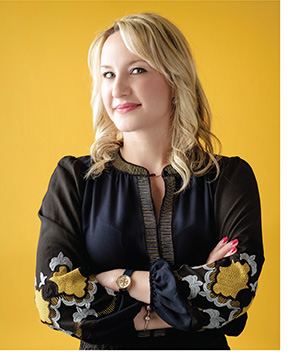 Anna Sergunina, 34
Anna Sergunina, 34
President and Chief Everything Officer / MainStreet Financial Planning Inc. / Burlingame, Calif.
Still in her early 30s, Anna Sergunina has found herself heading up a massive hourly national practice. Her staff of seven works around the country but largely virtually with clients, and mostly on a project basis.
Sergunina was born in the Soviet Union and left the breakaway country of Moldova when she was 15, settling with her family in Maryland. She got a job at the mall working at a novelty gift shop for $5.25 an hour when she barely spoke English.
She threw over an early interest in medicine to study business at Towson University and after school landed a job doing investment research for a team of stockbrokers at Smith Barney. But staring into a computer screen analyzing mutual funds wasn’t for her. She wanted to work with people, and became aware of holistic planning at her next job and through industry events.
She later found MainStreet, and company founder Jim Ludwick in 2006. The hourly model he pursued wasn’t as popular then, but other advisors were curious about the firm, frustrated that they were turning small clients away. “He learned there was a way to give advice and service people who maybe didn’t have a lot of assets but still needed help,” Sergunina says.
Ludwick was in his 60s, however, and by 2013, it was fairly obvious that the two would need a succession plan. Sergunina that year agreed with him that she would buy out the business over time (he’s still with the firm). Since she took over, she has worked to turn MainStreet from a practice into a business. She’s hired paraplanners spread across the country (she herself operates in Northern California). The firm, part of the Garrett Planning Network, currently works with 130 permanent clients and does 125 to 150 new plans a year. Sergunina now says she’s looking for a COO as well. The company has also recently embarked on a business to offer its services to companies as an employee benefit. “Why wouldn’t a business have such a needed benefit when there is so much struggle out there?” she asks.
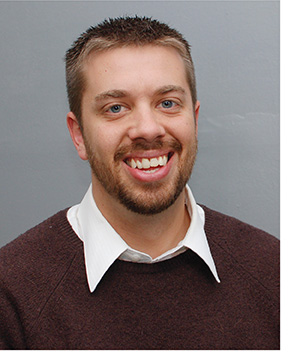 James D. Osborne, 34
James D. Osborne, 34
President / Bason Asset Management / Lakewood, Colo.
A few years ago James Osborne was working as a planner at a broker-dealer/RIA, when he got an e-mail from a prospect, who’d been impressed by the firm. But the client wondered if he were doing his math wrong after adding up the fees he’d be paying. For his $3 million to $3.5 million portfolio, he would be handing over $28,000 to $30,000 in fees. The math wasn’t wrong.
A light bulb went off. “For $40,000 a year, what are we offering? A couple of meetings a year? As much phone contact as he wants?” The overhead per relationship was about $2,500 a year, including staff salaries. Osborne wondered if the 1% AUM fee structure for high-net-worth clients was in trouble. He had also become disillusioned chasing active fund managers’ performance when ETFs are a cheaper option.
He couldn’t shake the idea he’d have to form his own business. But he wasn’t a born entrepreneur. He had been a religious studies major in college, and fell into the financial industry as a paper pusher to snag an income and pursued an MBA while working at a small brokerage.
He founded his new firm, Bason, in Lakewood in 2012. Right after he quit, his wife said she was pregnant with their second child. He had no clients and had to build from scratch. What’s worse was that the marketing for his new firm with industry conferences and social media didn’t pay off at first. There were 18 lean months, when they had to stockpile cash.
But his idea would prove to be a winner, especially among high-net-worth individuals for whom he could make the simple pitch: “You’re being overcharged.” A mention of Osborne in a Wall Street Journal column cemented him in a few minds, and business picked up in 2013-2014.
Now he’s got some $155 million in assets with an average client size of over $2 million. Someone with a $4 million portfolio is looking at paying him $4,800 a year, rather than $30,000 somewhere else, he says. Now, he’s getting to where he has to turn clients away.
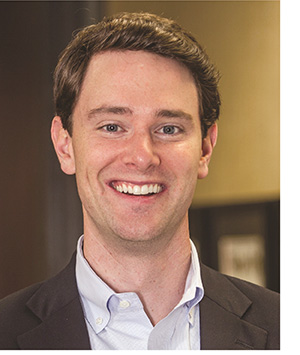 Peter Lazaroff, 32
Peter Lazaroff, 32
Director of Investment Research / Plancorp LLC / St. Louis, Mo.
Peter Lazaroff, a 10-year veteran of the financial advice industry, remembers getting his first share of Nike stock for his 11th birthday from his grandmother in 1994. He watched with fascination in the Wall Street Journal as the share price rose and the stock split. “I was fascinated by the idea that I would get these dividend checks without having done any work.”
Still, he didn’t know what financial planning was when he graduated from college in 2007. “It was in the CFA process … that I realized it was really hard to just get rich from buying a handful of companies. There is a better approach.”
At his old firm, he quickly moved from analysis to portfolio management and then showed a talent for new business, too. He started bringing in big fish when he was still in his mid-20s. He also started writing a newsletter (currently available at PeterLazaroff.com).
“We had account minimums [at the old firm] of $1 million,” he says. “It’s hard to have people come on board with you when you’re 25. So I started writing [the newsletter] to demonstrate knowledge. That opened up a whole different world for me, and I think that’s really when my career success took off.”
The idea of a planning process was well understood at his first firm, but as his clients’ lives got more complicated he realized tax planning and estate planning were sometimes more valuable than investment management. So two years ago he jumped ship and joined Plancorp. “This was a financial planning firm first. They didn’t even manage money for the first decade or so of being in business. When I came over here with my clients, suddenly they got comprehensive financial planning that I couldn’t provide by myself. I honestly believe one person can’t possibly be an expert in all fields.”
“I frequently tell people I can change their lives if I get to them in their 20s and 30s,” he says. “Just because you have the benefit of compounding. Not just investment returns but all the decisions you make at an early age.”
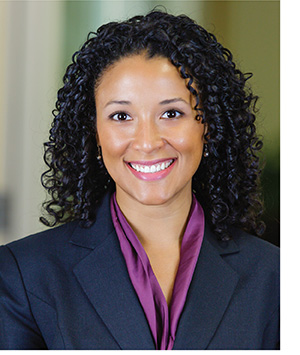 Rachel J. Robasciotti, 38
Rachel J. Robasciotti, 38
Founder, Principal and Wealth Manager / Robasciotti & Philipson / San Francisco, Calif.
Rachel Robasciotti’s success, on display in her YouTube videos, belie the fact that her success was harder won than most people’s. She grew up in a highly impoverished area in Oroville, Calif., where she says many of her childhood friends are either dead or incarcerated. Her own immediate family members dealt with crime, drug abuse, domestic abuse and mental illness, she says. That gave her a different view of money and how poverty ravages the black community.
“We were poor, and the painful things that happened in my childhood world seemed to wind their way back to our poverty,” Robasciotti says. “I became fascinated with money because the seemingly hardwired relationship between poverty and pain never quite made sense to me.”
She made her own mistakes with money early, she says, getting into credit card debt and having to declare bankruptcy to finish college at UC Berkeley.
She learned about financial planning as a profession when she was in college from a friend’s father. She interned at insurance companies, then set up a successful practice at MetLife’s financial planning program, where she says she was a top producer. But she didn’t like the focus on products.
“I decided that going independent was the only way I could continue to work in the best interest of my clients. So, at the age of 25, I started an independent financial planning firm.” That firm, founded in 2004, is now Robasciotti & Philipson, named also for partner Maya Philipson, who joined in 2006. Robasciotti started in a 400-square-foot office in downtown San Francisco with a two-hour commute each way, borrowing for furniture and supplies.
The firm clientele is 80% female and more than 70% LGBTQ. “I am very active in the movement for LGBTQ equality, particularly as it intersects with the fight for racial, gender and economic justice,” she says.
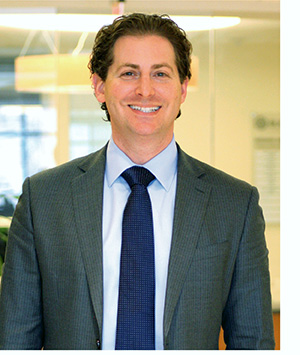 Adam Birenbaum, 39
Adam Birenbaum, 39
Chief Executive Officer / Buckingham Strategic Wealth and BAM Advisor Services / St. Louis, Mo.
Adam Birenbaum has never been a wealth advisor but he learned the advice business at St. Louis’s Buckingham Strategic Wealth behind the scenes while also attending law school at Saint Louis University. His legal background gave him a natural lead into compliance, operations and practice management.
In 2010, BAM co-founder Bert Schweizer turned heads by calling Birenbaum into the office and christening him company chief at the tender age of 31. The elder statesmen added two pieces of sage advice: “Add value to clients’ lives … and don’t fuck this up.”
Birenbaum recalls an early first lesson in investing: He used his bar mitzvah money to buy a painting of Ted Williams, rather than a share of Berkshire Hathaway stock that would be worth $250,000 today.
But now at 39, Birenbaum oversees an organization with 260 team members and 14 locations and $28 billion of collective assets under management or advisement.
BAM manages wealth but also partners with other like-minded advisors, providing them with marketing, investment strategy and back-office support.
Birenbaum’s stamp on the firm has been to foment a culture of acquiring, which he says is part of a strategy of getting to younger clientele. Before he was CEO, the firm partnered with Focus Financial Partners.
“I was the one that brought the culture of transactions and helping to solve for this industry’s succession problems and we’ve been doing that since 2010,” he says.
“We’re one firm with one ideology. With a client service approach. And all of our team members are salaried. A large number of our advisory personnel are also owners of our business. So they have an ownership mentality.”
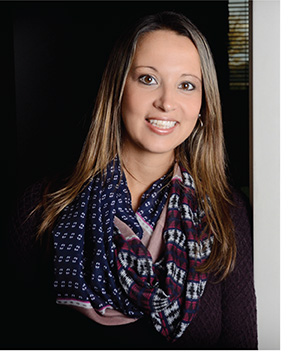 Courtnie Nein, 31
Courtnie Nein, 31
President / Good Life Financial Advisors / Wyomissing, Pa.
Courtnie Nein was in her last year of college, and was ready for one more year of field hockey at Syracuse University. Instead, she ended the 2007 season with torn cartilage in both hips. Sidelined during her last year, watching friends ride off to play Big East games, Nein stayed at home, suddenly undistracted by sports and friends, and studied for her securities and insurance licenses.
Just out of college, she joined Waddell & Reed, and learned comprehensive planning and helped build plans. “The product and the sale came second,” she said of her experience there. She also learned there that a lot of people “are scared to make the big [planning decisions] because they could go very well or very bad.”
She and her partner Conor Delaney had bigger, more entrepreneurial plans, however, and felt the urge to wander. “The platform that we had [at Waddell] wasn’t allowing us to market and do the things that we wanted to for our community.” In 2012, the two advisors, then in their mid-20s, launched Good Life Financial Group, taking 200 clients and $75 million in assets with them. “I was four months pregnant and his wife was seven months pregnant,” Nein says.
Good Life is a hybrid broker-dealer RIA (affiliated with LPL) that already has close to $800 million in assets and is now partnering with other advisors across the country to do the back office chores they don’t want to do. The firm has brought on 70 other advisors in 20 states around the country, and it’s on track to reach $1 billion in assets.
“We’re providing compliance to the advisors,” she says. “But we have a service organization. So if an advisor wants to leave, say Morgan Stanley or Merrill Lynch, our firm will go in, we’ll find the office space for the advisor, we build out the space for them, we train them, we help them move their actual clients over, so we’re opening all the accounts for the advisor and we’re doing that transition to independence. Then we service them ongoing.” She also says that in some cases the advisors are doubling the payout they are getting.
 Lauryn Williams, 33
Lauryn Williams, 33
Financial Coach / Worth Winning / Dallas
Many financial advisors know what it’s like to study for an MBA, but Lauryn Williams was doing it while training for the Olympics in Beijing. A sprinter and bobsledder, Olympic gold medalist Williams participated in the 2004, 2008 and 2012 Olympics, as well as the winter Olympics in Sochi, Russia, in 2014. In 2004, she was the NCAA 100 meter champion, then went on to win the silver medal at the Olympics that year. In 2012, she won the gold medal as part of the 4x 100 meter relay team. A fellow athlete turned her on to bobsledding for 2014.
But while she knows the experience of winning, she also knows what it feels like to lose—specifically to lose money while holding Bear Stearns stock. At age 20, Williams already had a six figure contract as a professional athlete, but lacked confidence in her first couple of financial advisors, who put her in things like whole life and IRAs without giving her the bigger picture of her finances. Other athletes she knew didn’t know what they were invested in either. Many ran into tax problems.
In October 2015, she launched her own firm, Worth Winning, which caters in part to athletes, whom she says run into a lot of money early on in their careers but aren’t always prepared to deal with the lean years between cash influxes.
“A person can make six figures one year and $20,000 the next,” Williams says.
Many don’t know how to do taxes or budget. Or they buy land and don’t know what being an absentee landlord means.
She caught the entrepreneurial spirit from her parents. Her late father was a restauranteur who also ran an 18-wheel fish truck.
She got her start in advising after she relocated to Texas from Miami, where she’d gone to college. She clicked on the name of a local advisor through NAPFA—an RIA firm in College Station, Texas, while she was training for the Olympics—and told the startled staffers, “I’d to work here. They thought I was insane because they weren’t hiring.”
They tried to get rid of her, she says, but she came back. She started taking the CFP coursework in 2012.
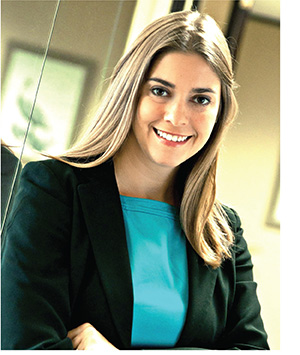 Blair DuQuesnay, 35
Blair DuQuesnay, 35
Chief Investment Officer / ThirtyNorth Investments LLC / New Orleans, La.
Still in her 30s, Blair DuQuesnay has carved out a role as thought leader in her CIO and partner role at New Orleans’ ThirtyNorth Investments, a firm with $135 million in assets. She’s written papers on everything, questioning how cheap ETFs really are to showing the stock performance risks companies take when they have no females on their boards.
Her career illustrates both great highs but also the risks awaiting those who go it alone. The former ballet dancer and Montgomery, Ala., native forswore a life of dance injuries and used her math smarts to get a job at UBS in Manhattan in 2004.
“I spent about five years there,” she says. But then she got laid off during the financial crisis. “It was the best thing that ever happened.”
In 2009, she joined an RIA, moving from sales to advice, but she didn’t see a lot of ways to serve Gen X clients, and she took a risk, uprooted and moved to New Orleans to launch her own firm catering to younger clients, before such a move became more common. Her focus was student loans, budgeting and savings rather than investment management.
But New Orleans wasn’t a big financial services town and her income for the first year was zero. The former UBS associate director ended up as a part-time bookkeeper and waitress serving drinks to college kids. She plunked at least $40,000 into her business, even pulling money from an IRA, while her husband was also struggling as an entrepreneur. That experience today gives her confidence talking to clients about doing the math and making similar hard, sometimes counterintuitive decisions.
About four years ago, ThirtyNorth needed an investment person and partner. DuQuesnay’s clients came along to the new firm. For younger clients with less in assets, the firm does monthly retainer financial planning (investment management requires more in assets). “For the cost of a cell phone bill each month we will do financial planning with them throughout the year.”
There she wears many hats, including compliance officer, planner and investment committee member. She’s also a new mom.
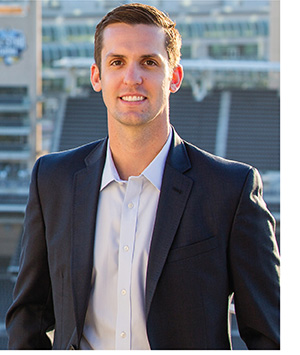 Taylor Schulte, 32
Taylor Schulte, 32
CEO and Founder / Define Financial / San Diego, Calif.
Taylor Schulte, the CEO and founder of Define Financial in San Diego, was 12 when he got a stock certificate from his grandfather for Medtronic. He was used to getting $50 every Christmas, not a gift that would teach him about compound interest. At the time he called it the worst Christmas ever, but eventually he used it to help make a down payment on his first home.
Schulte hit Morgan Stanley right out of college, and quickly figured that the bottom line at such companies was the company shareholders, not the clients. His manager put a number in front of him: $15 million in sales in two years. “Sure!” he said. “Ignorance helped me back then,” he laughs. He did as expected: hustled. Made 50 calls a day.
But he soon decided that the client who would take a call and say, “Here’s $1 million,” weren’t his kind of people. Quick sales meant short relationships.
“What I learned was, I enjoyed helping people. I didn’t really enjoy the trading of stocks or to guess where the market was going next. It wasn’t me.” Being able to put people’s financial puzzles in place was more rewarding, he says.
He decided to found his own firm in June 2014. He went all in. Whereas some new RIA founders pinch pennies, he said he blew a lot of money on a decent office in downtown San Diego and on advertising to launch his firm. He had just bought a house, so he had to rely on savings and eventually turn to credit card debt. “I have a hard time saying that, but it’s the truth. I took that risk. I came out unscathed and on the other end.” It was a tough ride, but he says he’s doubled his revenue since he started. He and his partner both run blogs.
The conversations at his old firms led with investments, he said. In his new firm, however, “Like a doctor we want to diagnose the client first and then prescribe the recommendation. Clients are always itchy, they’re always asking should I bring in my statement. No. We want to put a face to the name.”
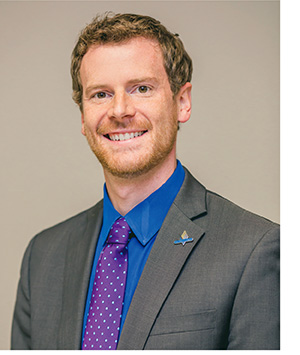 Andrew Sivertsen, 34
Andrew Sivertsen, 34
Partner, Senior Financial Planner / The Planning Center Inc. / Moline, Ill.
There was not A straight career line for Andrew Sivertsen. He didn’t even know financial planning existed when he got out of the University of Illinois in 2004. So rather than take his finance degree to a corporation, he took it to the Dominican Republic, where he taught junior high school in Jarabacoa with the Doulos Discovery School, a hands-on school that tried to bridge the gap between education for the rich and the poor.
“Their education models were beyond their time. … The Dominican Republican still has the lowest percent of GDP that they put into their schools in Latin America. Education is a huge problem.” But he says he picked up something from the culture, which he says is very “in the now.” That helps him deal with clients a certain way:
“It’s getting to know them and their life and what’s their ideal outcome and what’s their purpose and tailoring their plan based on what that looks like.”
He’s now one of eight partners at the Planning Center in Moline, Ill., overseeing some 80 clients. He joined his brother Matt Sivertsen at the firm working part time in 2007.
He joined just as the firm was starting to shift its thinking from AUM compensation to a level fee retainer model, one that the firm began to see flourish with other planners it came in contact with. The younger partners saw that servicing clients with AUM fees was not going to help those under 40 who hadn’t collected assets yet but still had to make important decisions.
“Marty Kurtz founded [the firm] in ’98,” Sivertsen says. “Kind of during those early 2000s, the average age of our client was Marty Kurtz’s age. So every year that went up with him. Once we launched this introductory service retainer program … we saw the average age start to decline.”
At the same time, the firm has begun acquiring offices and building its national footprint.
Sivertsen’s plunge into the planning world at a fast-growing firm has allowed him to take leadership positions. He was the president of FPA NexGen in 2014 and the chair in 2015.








